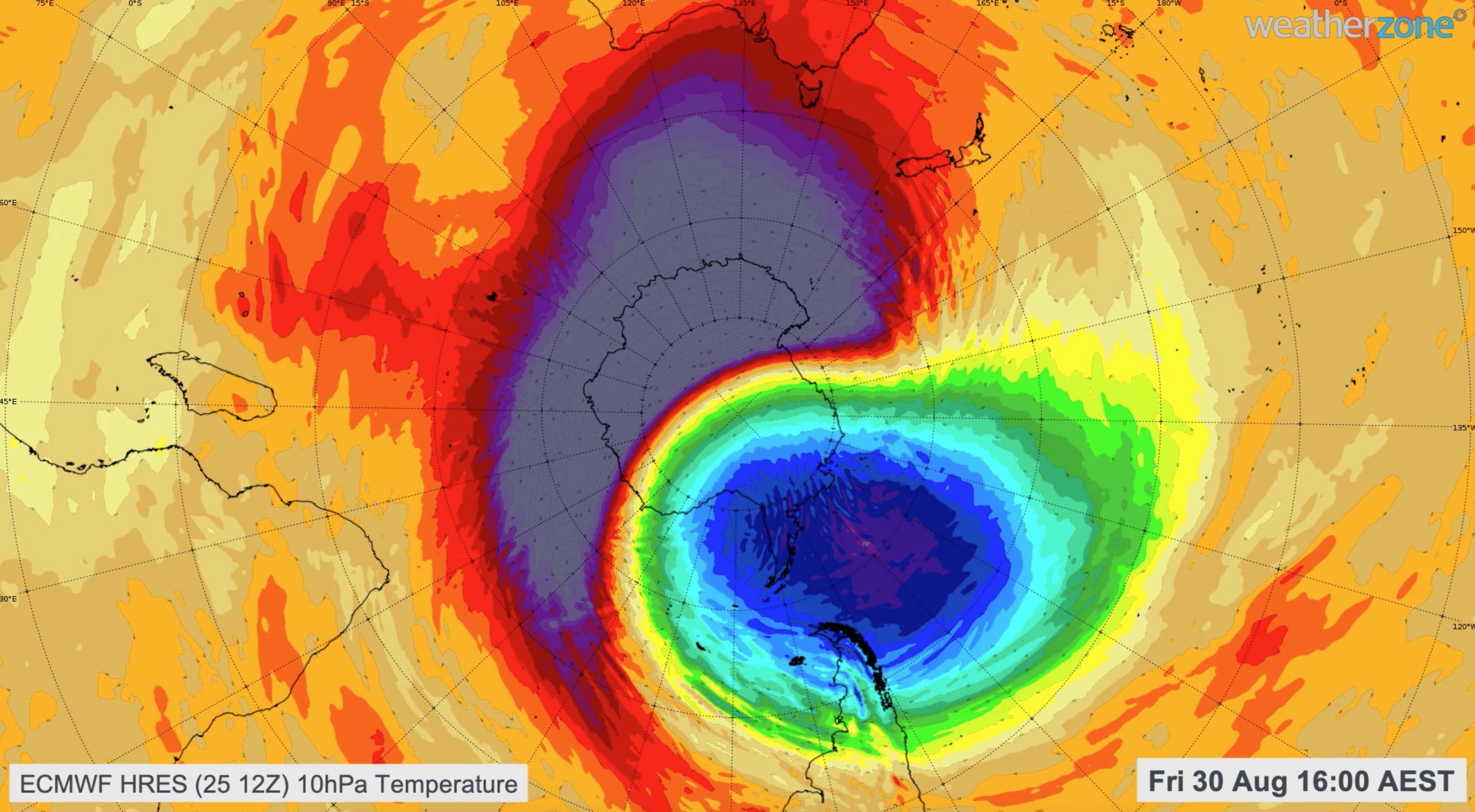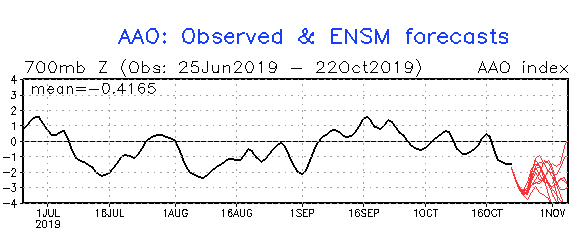Record small ozone hole as stratospheric warming reaches the surface

A rare sudden stratospheric warming has caused the smallest ozone hole on record this year and could now be influencing weather patterns in the southern hemisphere.
Every winter, a band of powerful westerly winds develop high above Antarctica and circulates the South Pole. This 'stratospheric polar vortex' keeps a large mass of cold air locked above Antarctica throughout winter, before gradually breaking down in spring.
On rare occasions, rapid warming in the stratosphere - around 30-40km above Antarctica - can disrupt the polar vortex prematurely in late winter and early spring. This phenomenon, known as sudden stratospheric warming, can set off a sequence of events that affect processes at varying levels of the atmosphere during the following several months.
A sudden stratospheric warming started to occur in the southern hemisphere in late-August this year. This is thought to have been one of the strongest episodes in recent decades.

Image: Modelled air temperature at the 10hPa level showing sudden stratospheric warming over Antarctica on Friday, August 31, 2019.
While sudden stratospheric warming events occur roughly once every two years in the northern hemisphere, they are rare over the South Pole. According to NIWA, there have only been two other significant sudden stratospheric warming episodes in the last six decades.
When this stratospheric warming started in late August, the rarity of the event made it difficult to predict what the flow-on effects would be during the weeks and months ahead. However, we now know that it has significantly reduced the size of this year's ozone hole and could soon be impacting weather patterns across the southern hemisphere.
Record small ozone hole
Ozone protects us from harmful radiation emitted by the sun. Most of the ozone in our atmosphere is found 15-30km above the ground in the stratosphere, although in the 1970s it was discovered that some human-produced chemicals were depleting this ozone layer.
This discovery led to swift global action to phase out the use of all major ozone depleting substances. Thanks to this change, the ozone layer is expected to recover to pre-1980 levels over the mid-latitudes by 2050 and over Antarctica by 2065.

Image: Time-lapse photo of an ozonesonde being released into the atmosphere on September 9, 2019 to measure ozone over the South Pole. Source: NASA/Robert Schwarz
Each year, a unique combination of meteorological and chemical conditions inside the stratospheric polar vortex causes a hole in the ozone layer to appear above Antarctica, during winter and early spring. This ozone hole usually grows to a maximum area of about 20 million square kilometres in late September or early October. However, this year the ozone hole only reached 16.4 million square kilometres, its smallest peak size since observations began in 1982, according to NASA.

Image: The peak of this year's ozone hole on September 8th, 2019. Source: NASA
The ozone hole is gradually getting smaller as the concentration of ozone depleting substances declines in our stratosphere. However this year's record low peak size was largely due to the recent sudden stratospheric warming.
Weather near the ground
Sudden stratospheric warming events happen at such high altitudes that they initially have no perceivable effect on the weather near the ground. However, the sudden warming that started in the stratosphere back in late August is now interacting with the lower levels of the atmosphere. This interaction could influence weather patterns in the southern hemisphere during the next couple of months.
Perhaps the best known surface-weather related consequence of sudden stratospheric warming in the southern hemisphere is a shift in the Southern Annular Mode (SAM).
The SAM is an index that measures the north-south displacement of a belt of westerly winds that flow through the troposphere (near the ground) between Antarctica and Australia. When the SAM index is negative, this westerly wind belt shifts towards the equator and during a positive SAM, the westerlies contract towards the South Pole.
Sudden stratospheric warming in the southern hemisphere has been found to cause an increase in negative phases of the SAM when it filters down to the surface. This connection between the stratosphere and troposphere, which is called downward coupling, appears to be happening now.
"Based on historical relationships for other stratospheric warmings and what we can diagnose [from recent observations], we think there is downward coupling from the polar stratosphere happening now and will lead to stronger negative SAM" said Harry Hendon, Senior Principal Research Scientist at the Bureau of Meteorology.
Negative SAM episodes during late spring and summer tend to promote more rainfall in western Tasmania and drier-than-usual weather elsewhere in eastern and southeastern Australia. This drier weather in the nation's east and increased windiness in the south also increase the potential for bushfires.
The SAM index is currently negative and at its lowest value since early September, with forecasts suggesting it could drop even further over the coming week.

Image: Southern Annular Mode index with obeervations in black and ensemble forecasts in red. Source: NOAA
Looking further ahead, there is an increased likelihood that we will see more dips in the SAM during the next few months.
According to Harry Hendon, "historically, a sudden stratospheric warming will shift the odds toward [negative] SAM from October to January, so we can still expect occurences of low SAM as a result of the stratospheric warming over the next two months or so."